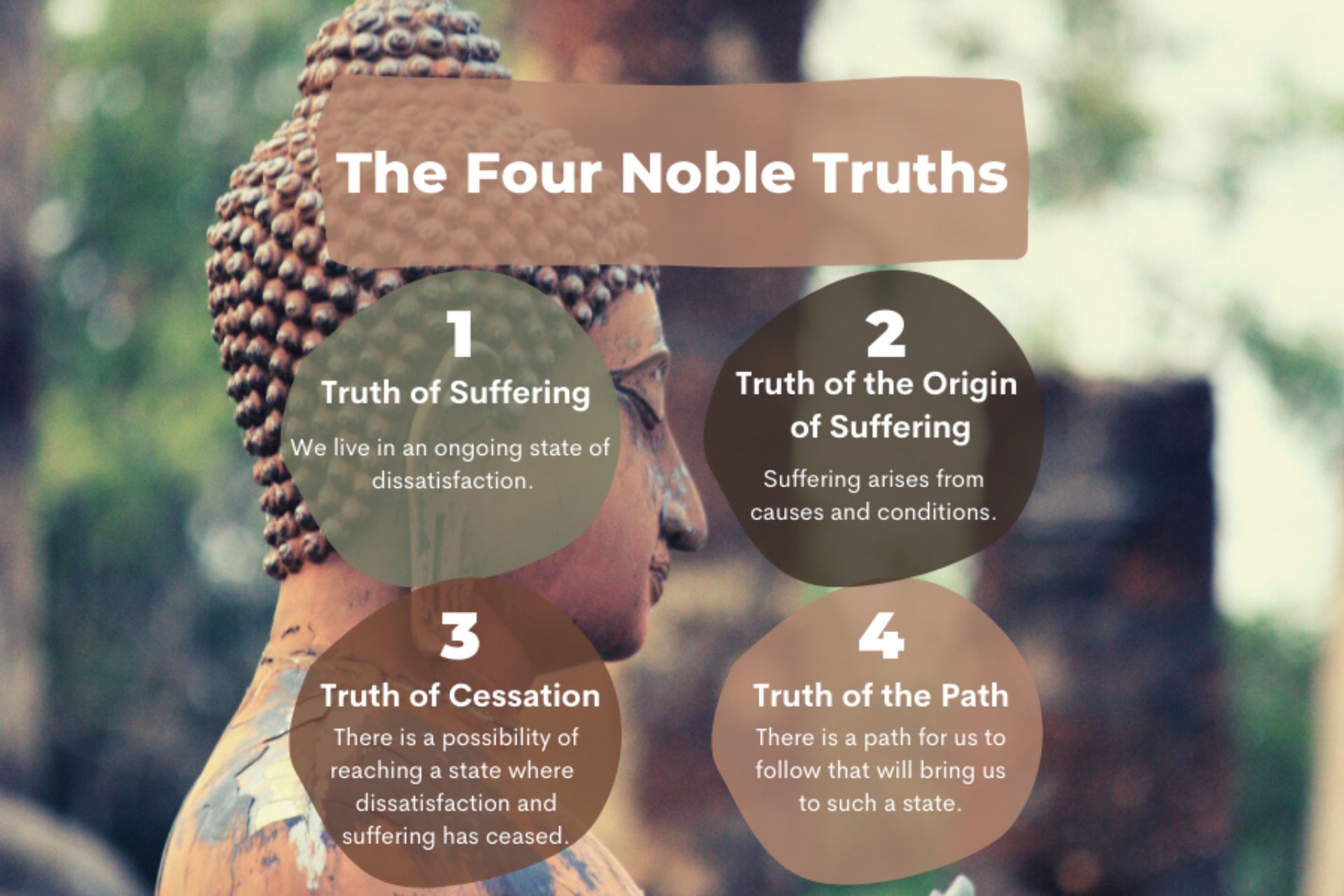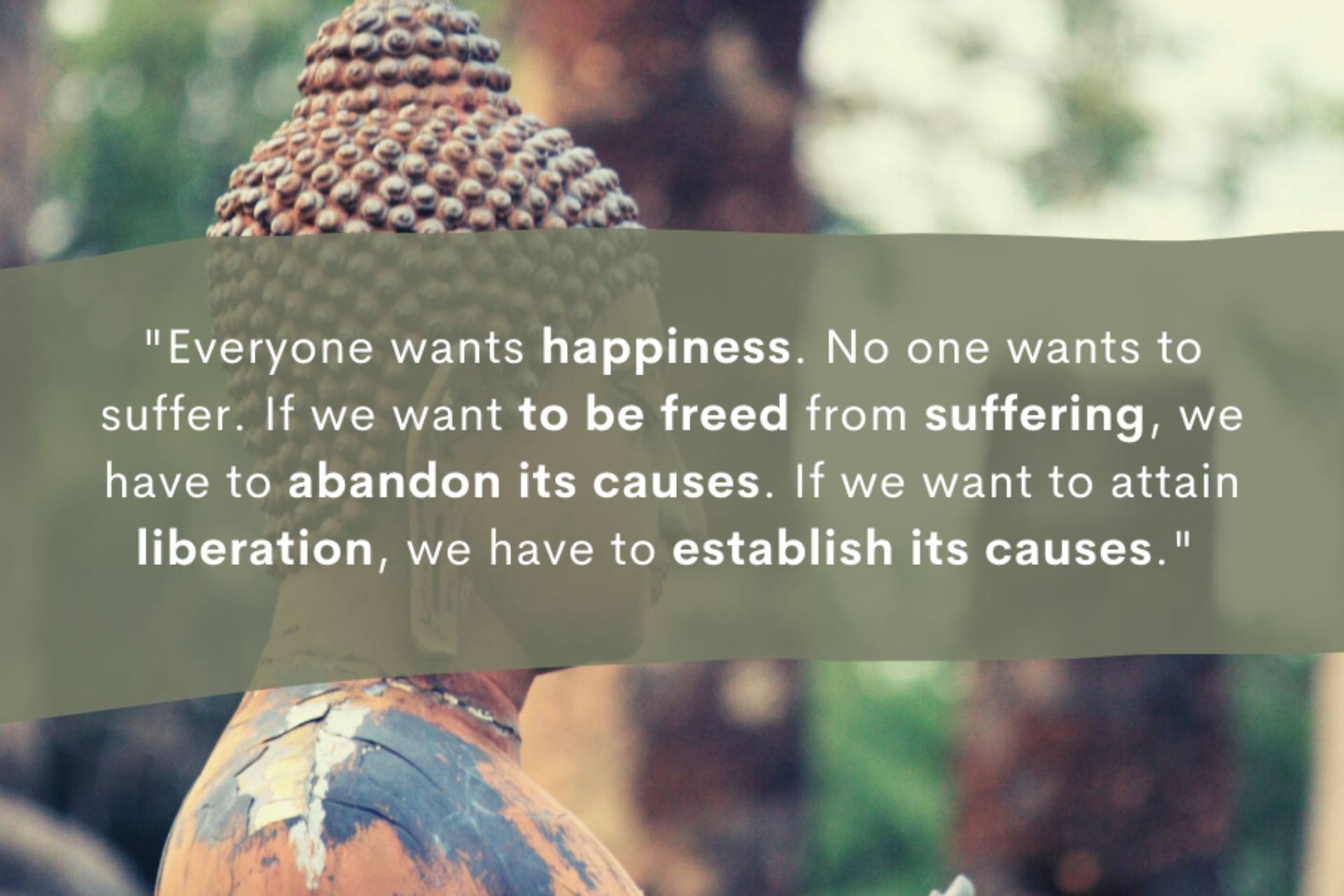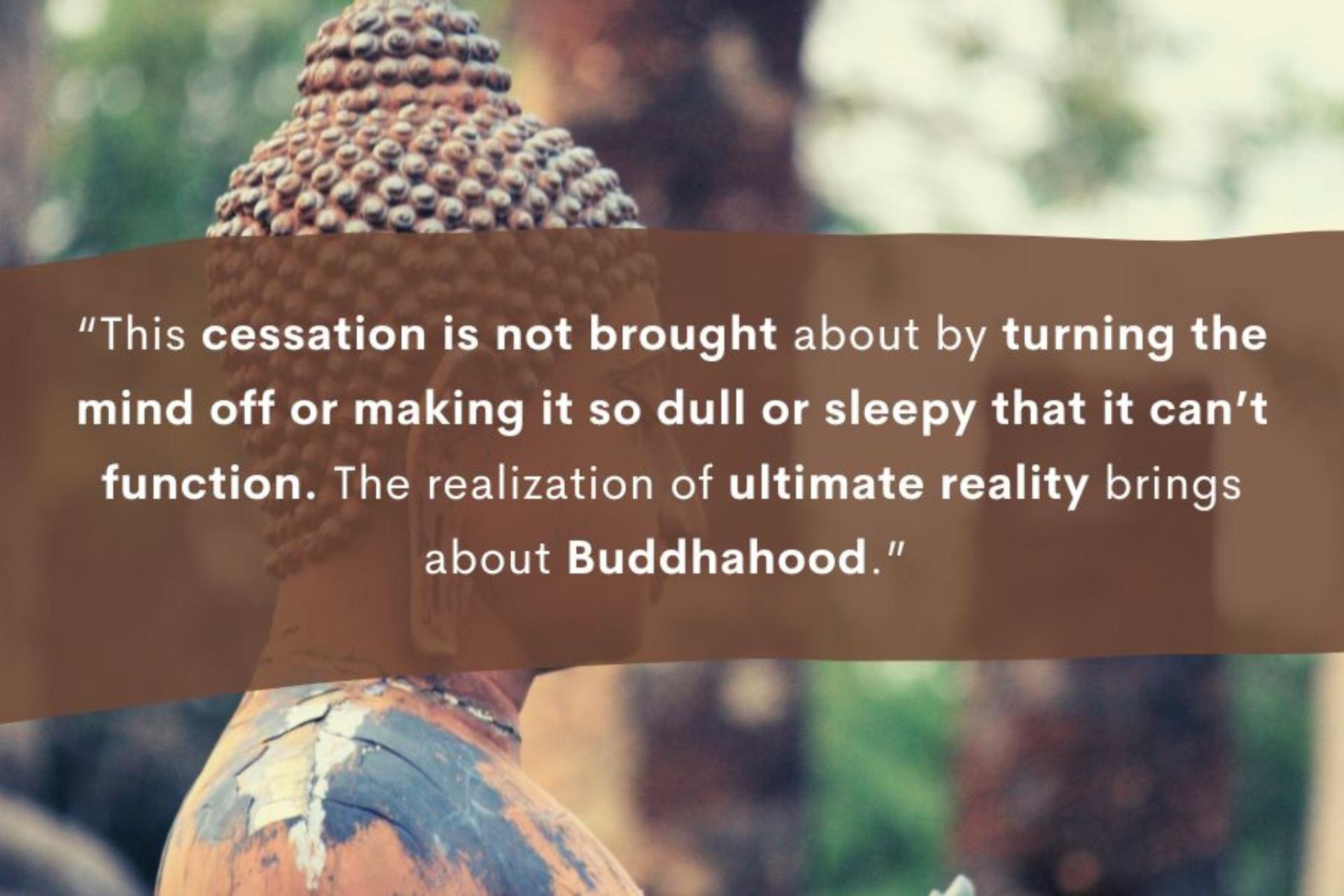The essence of the Buddha’s teachings can be summed up in four short statements, which are referred to as the Four Noble Truths. Though short and sweet at first glance, the Four Noble Truths require great amounts of contemplation and practice to be fully realized. Notice they are called the Four Noble Truths and not the Four Simple Steps to Nirvana.
To achieve anything noble in this life requires effort and dedication, and so it is with the Four Noble Truths. For example, the Buddha underwent years of hardship and days and nights of practice before he reached enlightenment and delivered the teaching of the Four Noble Truths.
So, what are these truths, and how did they come to be? Soon after the Buddha attained enlightenment in Bodhgaya, he taught the Four Noble Truths to his first five disciples in Sarnath.
And so began the Buddha’s famous teachings, which we know today as the Dharma. In giving us the Dharma (literally, “truth” in Sanskrit), he gave us the methods by which we can all come to experience what he had experienced, the ceasing of suffering and ultimate joy. The Buddha lived, wrote, and taught these methods for many years, establishing the first Buddhist Sangha, or spiritual community, the foundation for Buddhism as we know it today.
Here’s some good news for the skeptics: The Buddha didn’t ask people to practice these methods just because he said to; he felt that blind faith wasn’t worth much. Knowing that the faith of our own experience is unshakable, he asked people to try the methods for themselves to see if they worked for them. We can’t unknow something once we know it for ourselves.
So, let’s dive in and get to know or freshen up on this foundational Buddhist teaching.
What are the Four Noble Truths?
- The Truth of Suffering: We are living in an ongoing state of dissatisfaction.
- The Truth of the Origin of Suffering: Suffering/dissatisfaction arises from causes and conditions.
- The Truth of Cessation: There is a possibility of reaching a state where that dissatisfaction/suffering has ceased.
- The Truth of the Path: There is a path for us to follow that will bring us to such a state.


Why are the Four Noble Truths so important?
The Four Noble Truths form the basis of the entire path of Buddhist practice and the foundation of Buddhist Ethics. These ethics aren’t considered right or wrong merely because Buddhist teachings labeled them a certain way. What the Buddha taught is that if you want to be happy, there are specific behaviors that will help you reach that goal. On the other hand, specific behaviors will prevent you from reaching that goal. We often use “virtue” to label anything that causes happiness and “non-virtue” as anything that causes suffering.
These truths are often referred to as the causes and resultant sufferings of Samsara, and the causes and resultant state of liberation. Everyone wants happiness. No one wants to suffer. If we want to be freed from suffering, we must abandon its causes. If we want to attain liberation, we have to establish its causes. In summary, know the suffering, abandon its causes, actualize cessation, and rely upon the path.
Easier said than done, right? Here’s how we can know and learn to embody the Four Noble Truths.
The Four Noble Truths of Buddhism Explained
1. The First Noble Truth: The Noble Truth of Suffering
Samsara is the term Buddhism uses to refer to this state of suffering and/or ongoing dissatisfaction. When we say “suffering,” it’s not necessarily some kind of extreme pain or trauma. Suffering refers to the fact that everything is temporary and impermanent: we will eventually die; we are constantly craving and desiring things, people, and feelings. Samsara isn’t a place but a state of mind where we are never perfectly comfortable or satisfied. Even if we are for a moment, the craving and dissatisfaction quickly return.
When the Buddha taught the first noble truth of suffering, he was introducing people to a way of seeing the world and understanding their experiences of it. The wish to attain liberation from Samsara is called the mind of renunciation. The Tibetan term ngem gyung really means more like “fed-up” and kind of disgusted. So, renunciation doesn’t mean that you have to give away all of your possessions, run away to India, and get ordained. It is becoming thoroughly fed up with all the things of Samsara, and a wish to overcome all states of suffering/craving/dissatisfaction.
2. The Second Noble Truth: The Noble Truth of the Causes of Suffering
Once we see the reality of suffering, we see the causes of suffering. The Buddha taught that the causes of suffering are our own actions (karma) and our afflictive thoughts and emotions. It’s easy to blame our suffering on external causes like another person or situation. However, our own attitudes and actions are the primary determining factors of our happiness or suffering.
If we don’t want to suffer, there are specific actions and attitudes we should avoid. For example, if we lie to others, we will live with the stress and paranoia that whoever we lied to may find out the truth. If so, we may lose their trust and friendship. To gain happiness and avoid suffering, we must know the causes and act accordingly.
The system of ethics taught by the Buddha is very practical. It isn’t a command. Commands are hard to follow. The Buddha never said, “Don’t do this or that just because I said so.” Typically, that approach doesn’t work very well with children or adults. The Buddha taught virtues and non-virtues to refrain from if you want to avoid suffering and what to do if you want to gain happiness. Once we see the truth of this, we want to follow that system of Ethics because it is in our best interest to do so. (Here we explain the Ten Non-Virtues and Virtues the Buddha taught for a more detailed examination of the ethics.)
The Truth of Cessation is that there is an end to the causes and resultant sufferings/dissatisfaction of Samsara. This state of complete, permanent freedom from ignorance and attachment is called Buddhahood or the fully enlightened state. It is a state of peace in which suffering and afflictive thoughts and emotions will never arise again.
This cessation is not brought about by turning the mind off or making it so dull or sleepy that it can’t function. The realization of ultimate reality brings about Buddhahood. It’s important to remember that we all possess this Buddha nature, and through practice, we gain the wisdom to see it. The practices that bring about this realization are called “the Path.” (Here is an introductory course to meditation practices from our lineage to help you begin your journey on the path.)

The Truth of the Path refers to the “Path” that we traverse to attain Buddhahood—full liberation (from Samsara). When our mind has awakened to the deeper truth about the nature of reality, it is a goal.
In other words, we are traversing the path—progressing along it—when our mind realizes some level of reality. That realization counters or serves as an antidote to some misapprehension of reality that we previously held. For example, when we come to some new awareness or realization about Impermanence, we dispel our conscious or subconscious beliefs that things will always remain as they are.
There are many definitions and divisions of the Path presented in Buddhist texts. Read more about the Three Paths of Buddhism here. The main point is that by practicing the Path, we will uproot all the causes of suffering. Without the causes of suffering, there will be no results of suffering, and we will experience the peace and ever-joyful state of Buddhahood.
Stay inspired and connected on the Path by receiving the Weekly Dharma email with simple Buddhist teachings and real-life applications. Sign up here!
